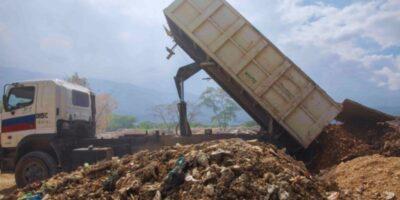A recent study from the University of Michigan points out the presence of arsenic and cadmium at unacceptable levels in rice imported into Haiti. AyiboPost spoke with Jackie Goodrich, one of the authors of this scientific work
Rice consumed in Haiti, originating from the United States and other countries, contains twice as much arsenic and cadmium, two substances dangerous to health, compared to local rice, according to the conclusions of a scientific research from the University of Michigan, published in February 2024.
This rice generally passes US quality tests. But these tests are based on occasional consumption, far from the predominance of this product in the diet of a country like Haiti, where rice remains the staple food.
In an interview with AyiboPost, Jackie Goodrich, associate research professor in environmental health sciences and co-author of the study, calls on US authorities to reassess standards and to remove subsidies granted to the rice industry.
Dr. Goodrich also asks Haitian authorities to promote local rice, while making practical recommendations to reduce the concentration of arsenic and cadmium in imported rice.
In a press release issued on February 24, 2024, the entity representing the industry, USA Rice, assures that its members adhere to « strict quality control protocols. »
Without concrete evidence, USA Rice attacks the scientific foundation of the University of Michigan study in a context where Haiti imports more than $200 million worth of rice from the United States every year.
This interview has been condensed and edited for clarity.
AyiboPost : What are the key findings of your study on UN rice imported rice to Haiti?
Jackie Goodrich :I did this study with a graduate student, Victoria Koski-Karell. She was in Haiti in the lower Artibonite region looking at, cholera and some other issues with agronomists there. And while she was there, a lot of the agriculturalists talked about these issues with having so much imported rice that was competing with their rice. They also thought the imported rice wasn’t as healthy.
We knew from other studies in the United States that sometimes rice grown in the US has arsenic, a toxic metal, because it’s naturally found in the environment where it’s grown, and the rice takes it up. We thought a good starting spot would to be look at arsenic and another dangerous toxic metal, cadmium.
We also wanted to look at the rice that’s locally grown in that region and compare it to a bunch of different samples of rice that was imported from different places that you could buy in the same markets.
We knew from other studies in the United States that sometimes rice grown in the US has arsenic, a toxic metal, because it’s naturally found in the environment where it’s grown, and the rice takes it up.
When we did this, we were surprised to find quite a big difference. All the samples from the local farmers in that region were very low in arsenic. They were very healthy, almost. Cadmium wasn’t detected in hardly any of those samples, and arsenic levels were very low.
But then the levels in the imported samples from the United States, but also the ones that we collected from other countries, had twice as high of the level of arsenic. Some of them even had levels that we would consider too high for health.
That finding was important. But we wanted to put it into context too. The levels [in the United States] that are set for safety might assume maybe you eat 1 cup of rice a day or something like that.
But we knew from our partners in Haiti that a lot of Haitians, sometimes might eat 3 cups of rice a day, sometimes even 4. So that means you’re taking in more of this arsenic every day if you’re eating a lot of the imported rice.
We did some estimations to understand what amount of arsenic people might get into their bodies if they ate rice 3 cups a day of the imported rice versus the local the locally grown one : we estimate that some people would have levels in their body that could lead to health effects long term if they keep eating that much of the imported rice every day.
All the samples from the local farmers in that region were very low in arsenic. They were very healthy, almost.
How can how did you set up the study?
We worked in the lower Artibonite region because that’s where we had partnerships with some local farmers.
For our sampling procedure, we decided we didn’t want everything to come from just one market. We wanted to get a distribution of some different products.
Our team collected rice from 4 different open-air markets and 5 rice mills across the lower Artibonite Valley. That’s where we got the locally grown rice from.
Then, we collected 48 samples from different farms, just to get a distribution and see if things were the same or different. We also picked up imported rice samples at the same open-air markets that we collected the local rice from.
In addition to that, we went to 2 supermarkets in Saint Marc as well to collect imported rice. We got samples from 14 different brands from 8 different countries.
Do we know if this rice, that has high level of arsenic is sold in in the United States?
We sell and buy the same rice in the United States, but most people in the United States don’t eat rice that frequently. If you’re only eating rice once a day or maybe every few days, the level isn’t as concerning. It’s more concerning if you’re eating a lot of rice every day.
Let’s talk about the institution you partnered with for this research.
I do have to say our partner and his organization wishes to remain anonymous. They didn’t want to put the real name of their organization in our document because they were kind of afraid for safety and privacy.
What are the consequences of eating a rice that has that much arsenic on a regular fashion…
All the health effects we are worried about come if you consume a few cups of rice a day, for many years.
If this is a very regular part of your diet and especially if it’s more than 1 or 2 cups a day, those are the people that I’m most concerned about.
There are certain skin lesions that are not cancer that can happen from chronic arsenic exposure. There is a higher risk of developing diabetes and certain cardiovascular diseases.
Read also : Huile, sucre, sel…, ces excès alimentaires qui tuent en Haïti
You can be the victim of stroke, if you have a lot of arsenic exposure over a long period of time.
Very high levels of arsenic can be linked to certain cancers too.
But I think it would have to be more exposure beyond just what you’re getting from rice to reach the levels where you would expect cancer.
You can be the victim of stroke, if you have a lot of arsenic exposure over a long period of time.
In children, we see chronic arsenic exposure can be linked to, not growing as well, kind of being smaller in size, having some neurological and cognitive problems. We’re not quite sure exactly what levels of arsenic caused that.
It seems to differ in different places, but we think it’s best to reduce arsenic exposure in children whenever you can, even if it’s just replacing one meal a day of rice with something else instead.
Do we know where this arsenic comes from?
In the United States, a lot of our rice is grown in the southern central part of the country. And in that area, there’s arsenic naturally in the ground. There used to be arsenic in a lot of pesticides that were used, so some of that was added to the environment.
And once its there, rice plants are particularly good at taking it up.
How does a rice that is unhealthy for human consumption ended up, in the plates of people in Haiti ?
In the US, we don’t test all the food that is grown and shipped out. We do have suggested limits that rice shouldn’t exceed, but it’s more of a suggestion and it’s not a binding law. We don’t measure it in every sample that’s grown.
But also, the levels in most of the samples that we measured are technically under a regulatory guideline limit that’s recommended.
Very high levels of arsenic can be linked to certain cancers too.
We think that limit is not protective enough for people that eat rice a lot. It’s okay for us to have this rice here in the US if we’re only eating it maybe a couple times a week. But it’s not good if people in Haiti are going to be eating it many times a day.
Can we link some health problems that we have in Haiti today with the consumption of this these rice ?
We’ve measured the arsenic in the rice that people are eating, but we haven’t yet measured it directly in people and then measured health effects in those same people.
What feedback did you receive since the publication of the study ?
I was just looking at the statement from USA Rice today. They say that there is no proof that arsenic in rice can cause these health effects and that all the rice is fine.
My reaction to that is that, yes, technically, the levels we found in most of the samples were below our recommended limit in the US. But I think that the recommended limit is too high based on a lot of health research that’s happened in many places around the world for people who consume a lot of rice.
The response that the USA Rice Federation gave is like what a lot of industries do when you say their product causes a problem.
Where do you think this problem comes from?
If policies could ever support the local food system as opposed to the imported food system, and if the local food system could produce enough to feed the nation, then there’s a lot of beneficial things that would happen.
Of course, there’d be a lot of health benefits. We would reduce arsenic. But the diet would be more diverse, and that would support the local growers, instead of rice farms of other nations like the US.
This has happened over the last few decades because of US subsidizing rice, making rice cheap in Haiti. It’s easy for us to sell and make a profit on it because it’s cheap for us to grow. The move to pressure Haiti to lower its tariffs in the 1990s was not beneficial to the country.
Do we know how countries like Mexico and Japan that are politically and maybe administratively, more solid, than Haiti, accepted, the same US rice?
I think it’s a problem that isn’t well acknowledged anywhere. I haven’t heard of any regulations in Japan or Mexico that reject any of US’ rice and say this isn’t healthy, don’t use it.
However, in these countries, there’s a lot more options. You can still get rice from any other place.
From a policy standpoint, what should happen in the US to solve that issue? But equally, from an individualistic standpoint, what do you think Haitian folks should do regarding the rice coming from the US?
From the US side of things, we have legislation that heavily subsidizes our farming industry, especially products like rice and corn. And that makes these products unrealistically cheap, making it easy to export a lot and producers make money off by sending it other places like Haiti.
Many of us in this field think we shouldn’t have such high subsidies for this farming industry.
For individual Haitian citizens, there’s a certain way that you can cook the imported rice that’ll get rid of about half of the arsenic that’s in there. The best way that I’ve seen is parboiling.
You boil a lot of water, about 4 cups for every one cup of rice. And then you put the rice in a boil, you boil it for 5 minutes. That dissociates some of the arsenic from the rice and it goes out into the water. Then what you do is dump out that water so that you don’t end up eating it essentially. Then, you put in new water and finish cooking your rice however you normally want to. That method can reduce arsenic by up by up to half.
Another thing that they can do is whenever possible, buy local rice.
Lire aussi : Nutrition : à quoi sert un diététicien ?
Also, if your region grows a stable grain other than rice, try substituting some of your meals with that instead whenever you can, just not to have such a heavy reliance on rice in the diet.
What does accountability look like for the industry when the rice they produce is potentially harming people in Haiti?
I think accountability would look like setting stronger guidelines.
For instance, right now, the guideline we have says you can have this certain amount of arsenic in rice and it’s okay. And most of the samples that we measured were just below that guideline. So that means the industry can say, oh, look we’re okay.
But I think that the guideline really needs to be reevaluated because we’ve seen effects of arsenic at potentially lower levels on different populations around the world.
I think accountability is reevaluating our guideline and having more testing of rice samples in the US.
What about Haitian authorities?
The best thing Haitian authorities could do is promote the local agricultural industry.
Read also : Les avantages du maïs pour combattre la crise alimentaire en Haïti
We’ve shown that the rice produced in Haiti has a very low arsenic and cadmium, so it has little toxic chemicals in it.
But in addition to that, supporting local workers gives people more autonomy to have the food that they need.
Editorial Update: After publication, the authors received numerous concerns regarding the article, which the scientific journal eventually retracted, giving the researchers an opportunity to respond.
According to Dr. Goodrich, the main concerns were about the interpretation of the data and the policy recommendations. « Basically, [the critics] think that the levels of arsenic we reported are not as toxic as we stated in the article, » Dr. Goodrich told AyiboPost.
« We are revising the article to resubmit it with a more moderate interpretation, » Dr. Goodrich added. « However, » she said, « the data and facts will not change. Imported rice still contains twice as much arsenic as rice grown in Haiti, and this could have long-term health impacts. » 11.12 17.5.2024
Cover image edited by AyiboPost featuring researcher Jackie Goodrich, with American rice bags typically imported to Haiti in the background. | © Wilson Saintelus
Stay in touch with AyiboPost through :
► Our WhatsApp channel : click here
► Our WhatsApp Community : click here
► Our Telegram canal : click here







Comments